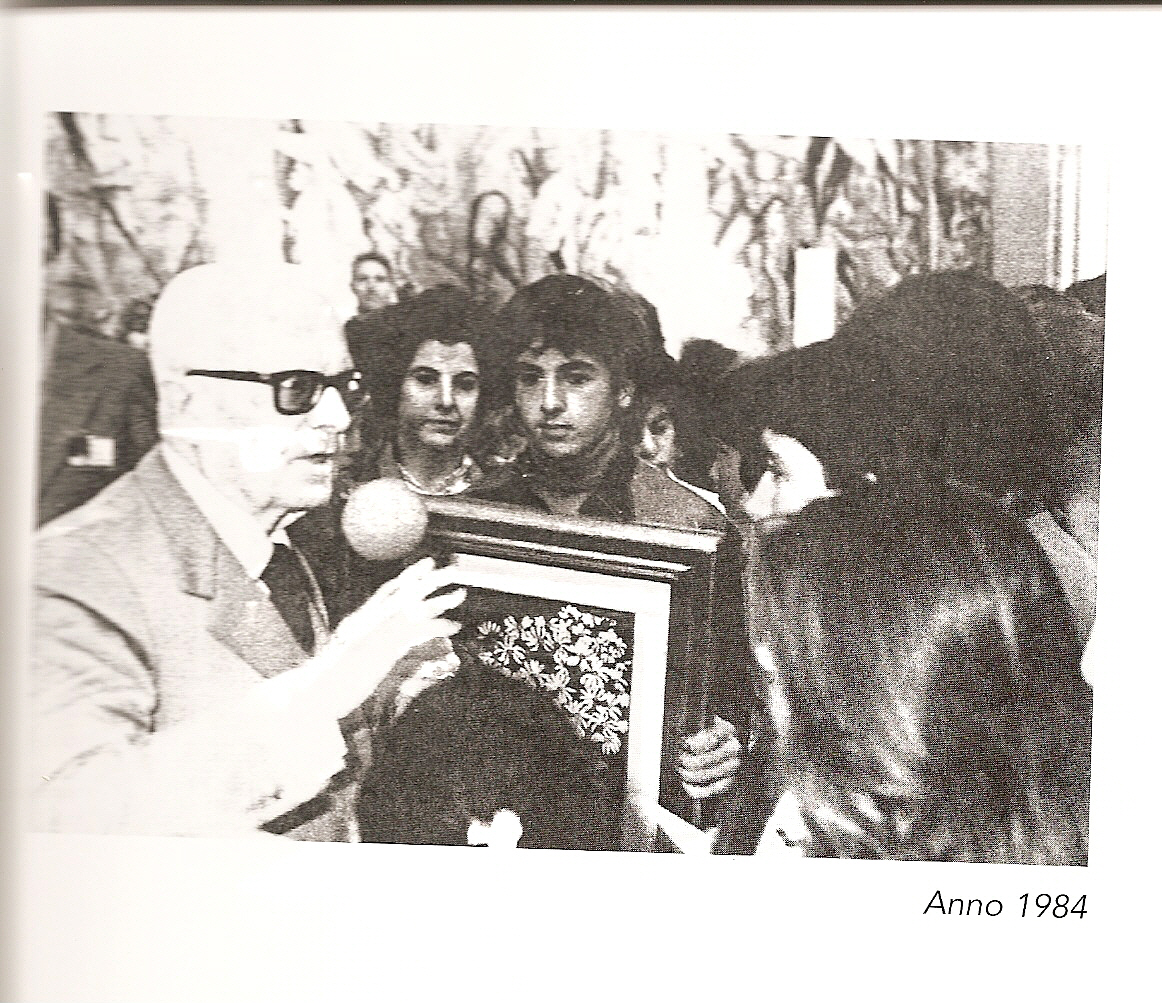|
Pietro Pecorari was born on the 25 of January, 1935
into a typical peasant family of Selci-Lama, a village of north Umbria
bordering on Tuscany.
He started painting in 1957, encouraged and supported by prof. Gianni
Angelini, art director of Perugina s.p.a.
"this letter changed my life"

Salvatore Di Bartolomeo writes:
“Wanda Papini, eclectic, polyglot, sensitive to the arts and a fine
woman, has been able to give to her gallery Arno in via della Vigna
nuova, one of the best in Florencce, a rigorous and very exact trend. To
the exhibitions of (...) she added that of Pietro Pecorari’s (...).
It seems incredible, but this shy and humble-looking man has got a
“diabolic” interior drive (...).
With his extraordinary convincing technique, Pecorari ranges over the
fantastic visions of surrealism, with a “pureness” and “spiritual
simplicity” that is really surprising. The graphic tissue, thanks to
particular colour effects, looks like a tale decorated with arabesques,
conceived in the Clitunno’ s land”
(21 March 1969- Napoli Notte)
In June 1980 Pietro exhibited once again in
Florence, at the Logge Rucellai:
“Pecorari is an artist hard to place among the currents, because to set
him among the naïf would mean to ignore the great importance he gives to
the structure of his paintings”
(Il Messaggero di Roma)
In the 80’s he exhibited in Milan, at the “centro
sperimentale di giornalismo”.
Here Silvio Ceccato, enchanted by “the wonderful, pure things”, gave a
lecture on the Umbrian artist, for the students of journalism.
“I think his way of painting is very interesting
and witty too: on the one hand it might be surrealism, on the other
sheer amusement.(…)”
Fabrizio Dentice 1985
1988: Rita Valli, a long-time teacher of the Brera
Academy in Milano , notes that Pecorari’s subjects “express in a
graceful way human weaknesses”.
And in 1989 Tommaso Paloscia writes with an
extraordinary keen sense of awareness:
“Pecorari, in fact
is only apparently
an unarmed and simple-hearted man…
...he holds deep inside
all the contemporary
painter’s aspirations,
suffering the toil of
the dramatic anxieties
brought about by the contemporary
ages with its social ,political
and cultural upheavals (…).
Pecorari is to be cherished for all these things
which altogether represent his artistic personality.”
|

